Lathing, or sometimes called turning, is the process of spinning a chunk of material quickly and removing pieces from this with a sharp tool. The purpose behind this is to get a perfectly round result with possible designs made from this. Think of wooden chair legs, they were probably made with a lathe of some sort. There are numerous things you can make with a lathe, but I started lathing in an attempt to make shift knobs for cars.
I first started by getting a membership to Hacksburg in the CRC and using their lathe to learn and make a few original designs with. At Hacksburg I received help from a member that used to professionally make shift knobs. After a few nights of hanging out there I realized it may be more beneficial for me to have my own lathe at home and stop spending the membership money. I searched for lathes and found nothing in my price range, so I ended up making one from a cheap drill press. It is not anything fancy, but it gets the job done. There are many types of lathes out there. Some are designed to be used on specific types of materials, some have variable speeds, some have built in tooling that allows for precise cutting, and some are very barebones. The kind that you need will vary based on the type of project you are doing. A barebones style is one that is great for starting out with.
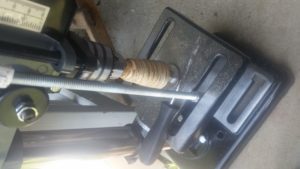
In my usage of lathing I use wood. I generally prefer darker and heavier woods such as oak. Oak is very dense, and the extra weight is great for a shift knob. I occasionally branch out and work with some materials. I have been enjoying working with old skateboard wood. With this I cut the board up into pieces and glue the layers into a block and then use this to lathe with. The results give a really nice layered and colored look that people really enjoy. (Below is a before and after of a shift knob made with skateboard wood.) If you have the correct tools you can also lathe metal and plastic. Metal lathing takes a little bit more skill and patience than wood and is something that I haven’t gotten the chance to do yet.
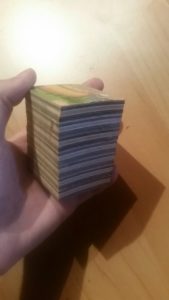
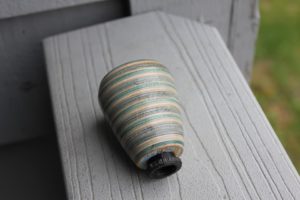
The process of lathing is pretty simple. You spin something really fast and you touch the spinning object with a sharp tool in the place you want to indent or carve out. Here is a link to somebody using a lathe: https://www.youtube.com/watch?v=CItb0hbmkoo. Usually you use special carbide tip tools, but I went the cheap route and grinded down a flathead screwdriver. The designs you can make a pretty limited to round, cylindrical type shapes with curvature to it. Sometimes this can restrict some creativity, but you can often pair a lathed item with something to get an entirely new design. (Below is an image of a shift knob with a lathed internal piece and a bicycle hand grip exterior.) This knob was created with a Schwinn hand grip put onto a lathed insert that was responsible for threading onto the shifter. This combination allowed for a cylindrical insert of a specific size that I need and a gnarled grip external that feels great for a user to use.
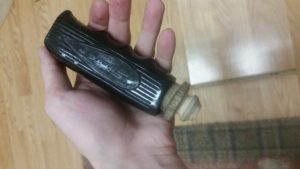
Another use for lathing that I have been doing is bottle stoppers and home decoration. I tend to only use lathing for these purposes for gifts and if somebody requests it. (Below are some images of a bottle stopper and a little shelf mushroom I made.) Both of these mushroom designs were for a family member who likes mushrooms. Mushrooms are generally round in nature, or in iconic drawings, so lathing them out is simple and easy.
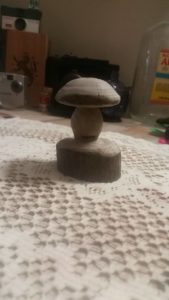
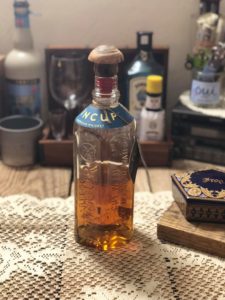
To many people coming up with something to make with a lathe may seem difficult. It may seem as though one can only create a handful of things with a cylindrical base shape. This can relate back to the idea that we were told about in class that some restrictions create creativity. I sometimes try and find ways to add or remove from lathed items in an attempt to break away from the cylindrical shape. Your finished product does not have to be completely lathed. You can even piece multiple lathed items together to create new shapes. Here is a great resource for unique lathed items that can show you what can be done: https://www.pinterest.com/scarlette1961/woodturning-ideas/
Relating lathing to computer science is sometimes hard. However, I feel as though both act as a median for my creativity. If I want to express myself in a way that allows me to be outdoors and work with my hands then lathing is a great thing to do. If I want to express myself from the comfort of my desk then code is a great way to do this. Both activities allow you to create something from almost nothing. Lathing is similar to working with prewritten code or even libraries. You are constantly removing little pieces you don’t want or need until you are left with the bones that you are happy with and from there you can choose to add more to it if needed.
I think lathing is a great resource for anybody to use to express their creativity. It is not the cheapest hobby to get into, but you don’t need anything fancy to get started. I highly recommend that anybody who likes to work with their hands give it a try at some point. Hacksburg in the CRC has several lathes and some great members that would be happy to teach anybody that was interested. A link to them can be found here: http://hacksburg.org/. They are a great resource for anybody wanting to build anything at all whether or not it involves lathing.
Featured image from: http://www.boaonline.co.uk/wp-content/uploads/2014/11/wood-lathe-use.jpg
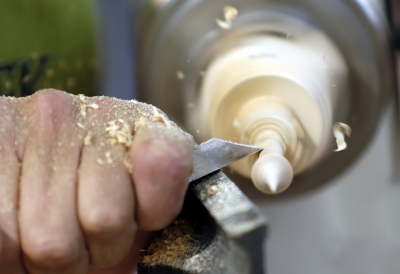
This creative process is super interesting. I can see lathing being popular in the old days that it delivers symmetrical product in a fast and easy procedure.
What is your opinion comparing lathing to 3D printing?